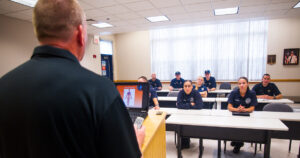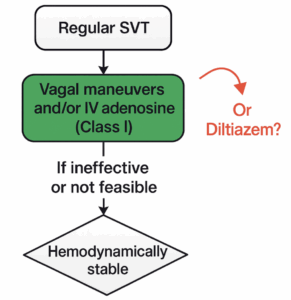Authors: Joshua Stilley, MD FACEP FAEMS; Medical Director, University of Missouri Ambulance and Jacquelyn Brown, NRP; Paramedic, University of Missouri Ambulance
Editor: Michael DeFilippo, DO; Assistant Professor of EM and EMS; Washington University at St. Louis School of Medicine
In emergency medicine and EMS, we use many cognitive tools to enhance decision-making. One of the most prominent frameworks, Crew Resource Management (CRM), has been adopted from the aviation industry. However, there are numerous other mental models that pilots utilize to safely conduct a flight, which can also apply to emergency care. In this series, we will explore fundamental aviation principles and discuss how they apply to healthcare, using specific case examples.

What Are BOLD FACE Checklist Items?
While checklists have become commonplace in many healthcare settings, the use of checklist BOLD FACE items has yet to catch on. In an aviation emergency, a pilot needs to know the first few action steps by heart, or muscle memory, so they can be completed immediately. Once the BOLD FACE items are complete, the pilot then consults the checklist to ensure accurate completion, as well as to continue with the next steps. Examples can include an engine fire, where cutting the mixture and shutting off fuel flow to the engine must be done at the earliest recognition of an issue without having to consult an external checklist.
In emergency medicine and EMS, there are items already existing that are often enacted similar to BOLD FACE items. However, specifically calling them out may help ensure medical directors set the standard; educators train to them; and our clinicians enact them appropriately in a time of crisis. Specific clinical scenarios that call for BOLD FACE action include the first few steps of cardiac arrest care, epinephrine administration in anaphylaxis, and benzodiazepine administration in a status epilepticus patient.
In emergency medicine, the concept of BOLD FACE items is equally crucial. Certain medical situations—such as cardiac arrest, anaphylaxis, or seizures—require immediate intervention, with no time to look up dosages or protocols. Clinicians must know and memorize critical steps, ensuring they act quickly and decisively.
For example, during an anaphylactic reaction, the administration of epinephrine is the BOLD FACE item. The clinician must immediately recognize the signs of anaphylaxis and administer the correct dose i.e. 0.3 – 0.5 mg of epinephrine intramuscularly in adults (depending on protocols). This action cannot wait for a reference – every second counts when it comes to preventing airway compromise and circulatory collapse.
Similarly, during a seizure, the prompt administration of a benzodiazepine, such as midazolam, is the BOLD FACE item. Delaying the medication can prolong the seizure, increasing the risk of brain injury. Knowing the correct dose from memory is critical to providing timely care and avoiding preventable complications.
Memorizing BOLD FACE items ensures that when chaos strikes, professionals in both fields can respond with confidence and efficiency. In aviation, a checklist can be referenced once the aircraft is stabilized and the immediate emergency addressed, but the first few seconds are critical to survival. The same applies to medicine – stabilizing the patient often depends on immediate interventions that can’t wait for a manual or app to be consulted.
The value of training and repetition in both fields cannot be overstated. Pilots rehearse emergency procedures regularly in simulators, and healthcare professionals must do the same through drills and practice. By hardwiring these steps into their memory, they can act swiftly, reducing errors and improving outcomes.
The concept of BOLD FACE checklist items is a powerful tool that translates across industries. In aviation, it ensures pilots know exactly what to do when things go wrong. In medicine, it ensures clinicians are ready to act immediately when lives are on the line. Whether it’s administering epinephrine in anaphylaxis or executing an emergency engine shutdown, memorizing these life-saving steps can make all the difference.
Further Reading:
1. Clay-Williams, R., & Colligan, L. (2015). Back to basics: checklists in aviation. BMJ Qual Saf, 428-431. doi:10.1136/bmjqs-2015-003957
2. Schwabe, L., Joels, M., Roozendaal, B., Wolf, O. T., & Oitzl, M. S. (2011). Stress effects on memory: An update and integration. Neuroscience and Biobehavioral Reviews, 1740-1747.



